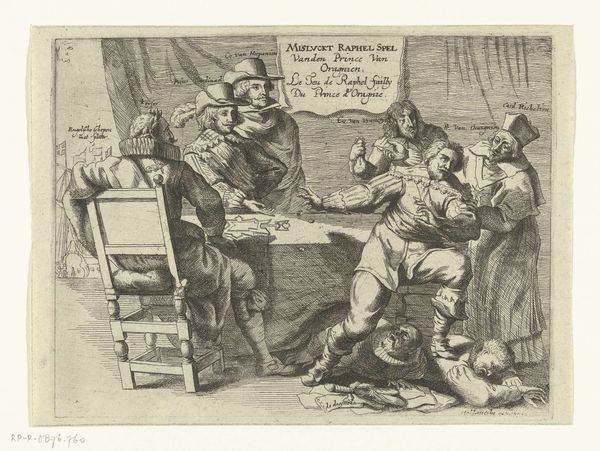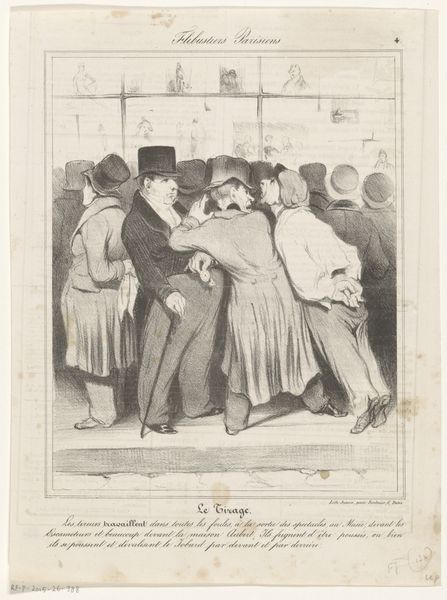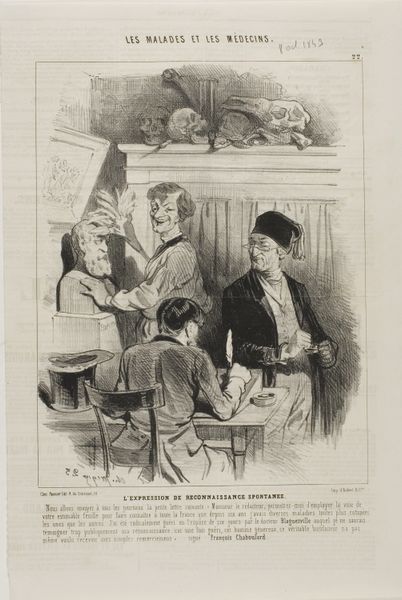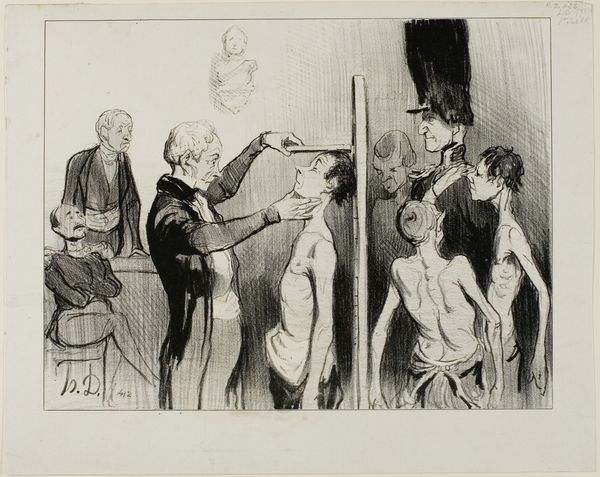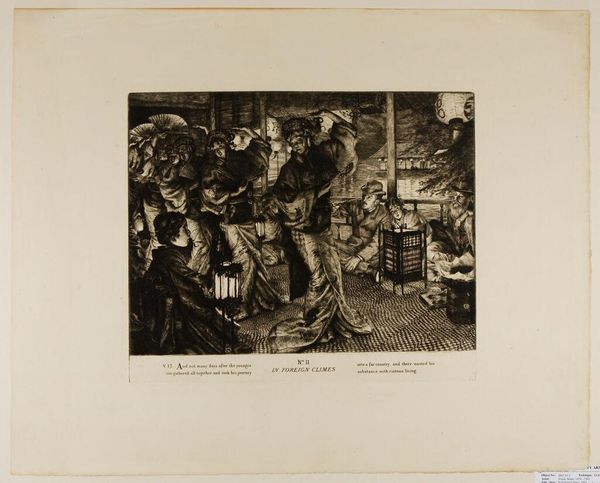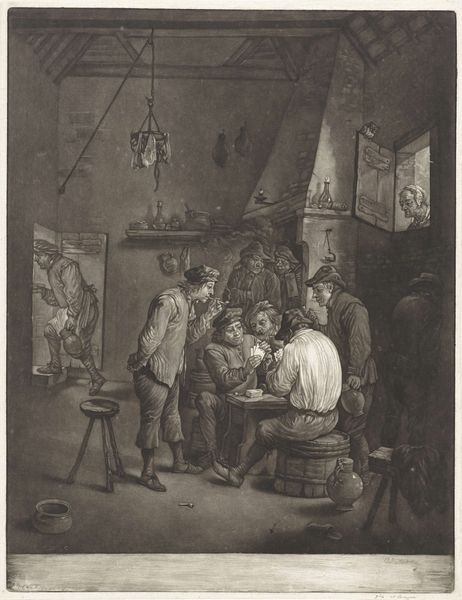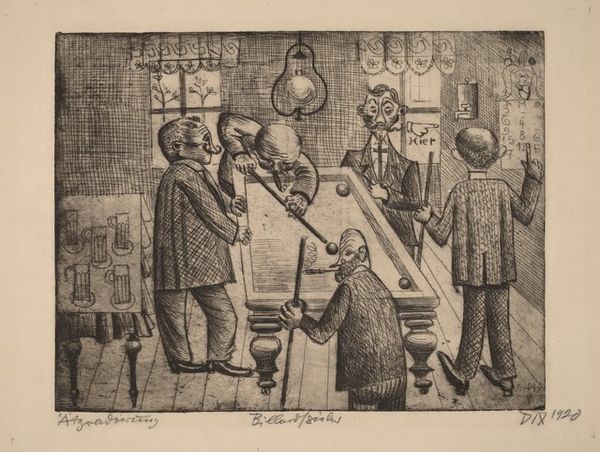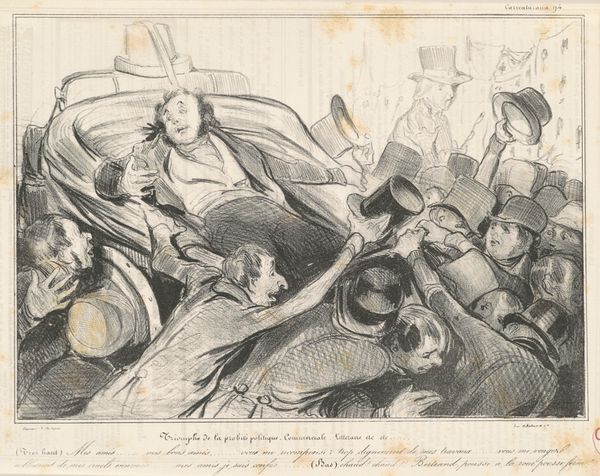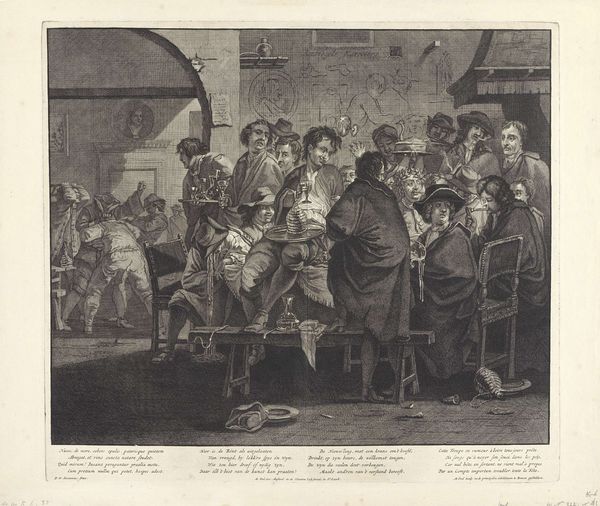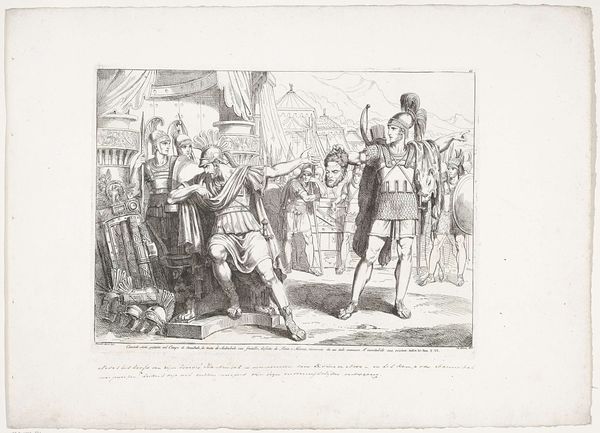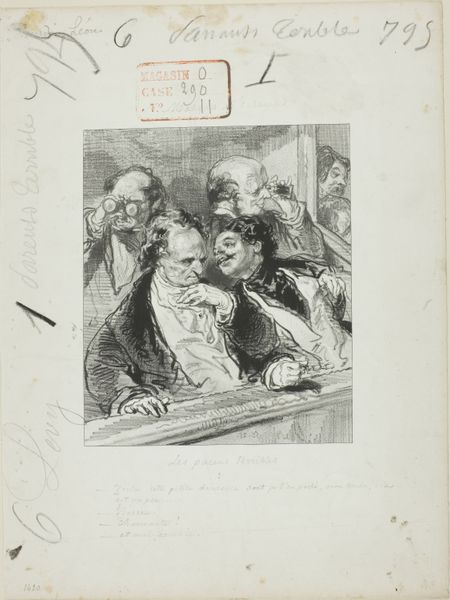
drawing, lithograph, print, paper
#
drawing
#
narrative-art
#
lithograph
# print
#
caricature
#
caricature
#
figuration
#
paper
#
romanticism
#
france
Dimensions: 219 × 278 mm (image); 272 × 363 mm (sheet)
Copyright: Public Domain
Editor: We're looking at Honoré Daumier's "Temptation, plate 453," a lithograph from 1835. It's teeming with grotesque figures. They're crowded together, offering something that looks like a crown. It feels chaotic and satirical. What kind of commentary do you think Daumier is making here? Curator: This print needs to be seen in its historical context. Daumier was working in a France ripe with political and social unrest. Louis-Philippe’s reign, though initially promising, quickly became associated with bourgeois corruption. The 'Temptation' speaks directly to this. Daumier was known for his caricatures that lampooned the elite. Do you notice how the figures are depicted with animalistic features and exaggerated expressions? Editor: I see it now! The figure presenting the crown has this almost pig-like snout. And some even have horns. So it's about more than just individuals? Curator: Exactly. It's a critique of power structures themselves. The act of offering the crown represents the insidious nature of temptation, the way power can corrupt and be offered by equally corrupting forces. Look at the documents and objects surrounding them—they symbolize institutions like law and finance complicit in the charade. Daumier challenged the very image of those in power that they were actively constructing, like the citizen king. Editor: So the piece acted as a form of visual resistance against what Daumier saw as a morally bankrupt establishment? Curator: Precisely. His art wasn't merely aesthetic; it served as a form of political engagement, aimed at awakening public consciousness. These works were initially published in newspapers, accessible to a wide audience, which added to their potency. Editor: It’s interesting to think about how effective art can be as a form of political commentary. I will never be able to look at his artwork in a vacuum now that you’ve provided an historic understanding to unpack its themes. Curator: I think we both came away from this talk with greater enlightenment around art as a tool of rebellion.
Comments
No comments
Be the first to comment and join the conversation on the ultimate creative platform.
